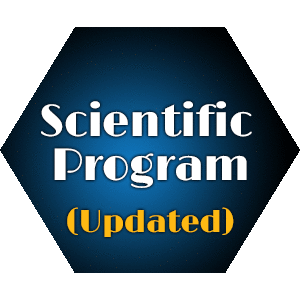Bhanu P. S. Sagar
IEC College of Engineering & Technology, IEC Group of Institutions, India
Title: Safety and Toxicity Evaluations of Xanthium strumarium Linn.
Biography
Biography: Bhanu P. S. Sagar
Abstract
Xanthium strumarium L. is poisonous to mammals due its toxic principle which is a diterpenoid glycoside i.e. atractyloside found in the roots and seeds. It was thought worthwhile to carry out the hepatotoxic assessments and safety and toxicity evaluations of oral administration of atractyloside and methanolic extracts of X.strumarium L. in albino wistar rats. So, present investigation was undertaken with following objectives:
• To develop standardized protocols for Extraction, isolation, purification, chemical characterization and quantitative estimation of Atractyloside in Seeds / Roots.
• Hepatotoxic assessments of oral administration of atractyloside in albino wistar rats.
• To study the safety and toxicity evaluation of methanolic extract in albino wistar rats.
Xanthium strumarium Linn. roots and seeds was found to contain alkaloids, Free Amino acids, Anthraquinones, Reducing sugars, flavonoids, atractyloside, Phenolics, Steroids, Terpenoids, Resin, and Saponins. In the present investigation attempt was made to separate the atractyloside from seed and roots of the plant by using instant preparative thin layer chromatography (IPTLC) technique. The Purified atractyloside was chemically characterized by IR, Mass and NMR (Proton and Carbon NMR) spectral analysis. Atractyloside concentration was found to be 2.9 and 4.3 mg/ml in plant roots and seeds respectively using HPLC techniques.
During hepatotoxic assessment, atractyloside produced severe hepatotoxicity in albino wistar rats. Observations of the sub-acute and acute toxicity studies had clearly indicated that methanolic extract of X. strumarium had shown a narrow safety margin in animals. So, present investigation had indicated that atractyloside induces hepatotoxicity in rats. On the basis of subacute and acute toxicity evaluation studies, it was established that both atractyloside and methanolic extract of X. strumarium L. possess a narrow safety margin in experimental animals used in in-vivo experimental and preclinical pharmacological studies

